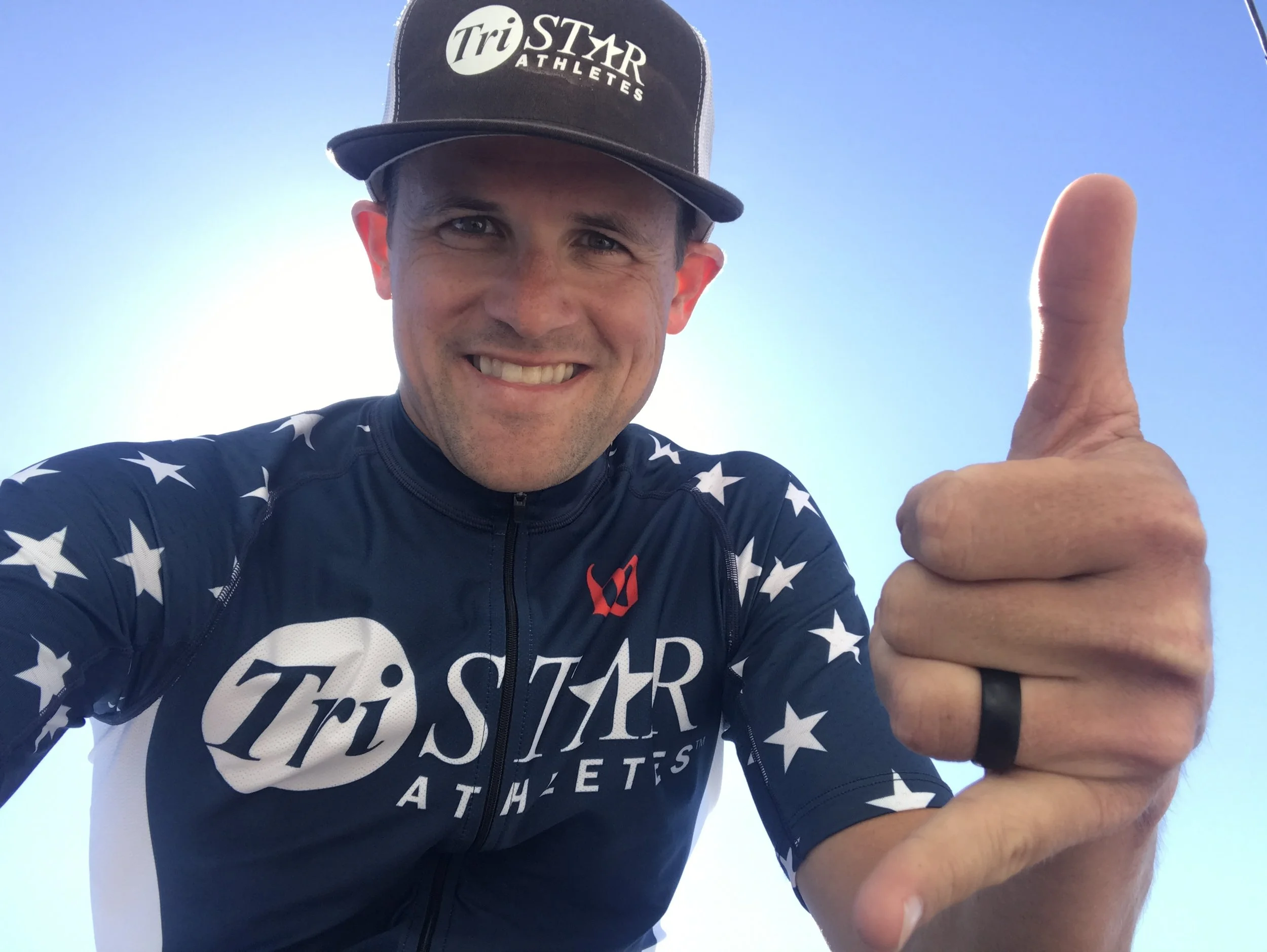Ironman Chattanooga
New here?…As iron sharpens iron, one person sharpens another—our coach leaders give willingly of their time and expertise to build up the next generation of endurance athletes, earn trust and respect from the people they lead. Not only do we set the standard for future leadership, we also leave behind a legacy worth celebrating with each athletes goal we build. Contact us, we would love to hear from you.
Tristar Coaches and athletes Podcast interivew 2019
The heat is on this year, and heat strategies must be in place to ensure a great day. Rain is also in the forecast so be prepared for extreme heat and or rain!
Keep cool early in the day even before you head into the water. Core temperature only goes up throughout the day. Follow our heat training and racing protocols here.
High humidity and high heat will slow your progress - don’t try to hold a specific power or pace, read the conditions and stick to your Raceday strategy and note your rate of perceived effort. Your Tristar training plan and race strategy have been dialed in to you stick to the script!
SWIM
The point-to-point swim in the Tennessee River will start 2.4 miles upstream of transition. Athletes will enter the water in a rolling start.
A fast swim for certain with the current.
Expect the water to be very warm compared to most open water swims.
Aim for the Maclean island and let the current take you “left” towards shore. Basically draw a straight line from the swim start to the island and then clear the island swimming with it to your right hand shoulder.
Draft; dont forget it and do it as much and as often as you can.
Swim splits are generally 25% faster than your normal ironman split.
BIKE
The 116 mile bike course takes riders 11 miles south of town before beginning two 47-mile loops in north Georgia. This is a rolling course with great road surfaces. The bike course has approximately 4808 feet of climbing.
Start off the bike “easy” use our bike, pacing and legal draft strategies to move into position and save time and energy. Stick to your Tristar bike pacing plan here for wind sheer.
The first 11miles are flat and rolling before you hit the bottom of the lollypop.
The first half of the lollypop is gentle to steady rollers of hills ~2-6% grade max. Very “doable and fast” Road conditions are also fast, stay aero.
Miles 32-54 you can back off the “power” somewhat and pedal coast as your speed increases and you ride more generally downhill. Some small hills will require work but overall its again very fast and steady. Each uphill rewarding you with a sweeping downhill.
Miles 53-56 you will climb up and over the bottom of the lollypop to complete the loop. This entire first loop should feel “guilt provokingly slow and centered on getting in nutrition. You should complete this part of the course feeling worried you are not going fast enough - remember its HOT.
The second loop stick to your Tristar pacing targets for power, heart rate, RPE and nutrition intake. Grab water at each aid station and cool off the legs with water, spraying it under the helmet and on exposed skin to cool your core.
Back into town; the final part of the stick after the second loop of the lollypop the winds can vary depending on weather patterns and conditions. Head or tailwind is possible, be sure to check the latest forecast before raceday.
run
Total elevation gain for the run is ~1200 feet…. There are two distinct sides of each loop you do twice. The first half of the firs loop is relatively flat and faster with the second side of the first loop much more hilly. This means loop two is flat to start ~ miles 13-18 and then hit the hills in the final 10k of the second loop and marathon!.
The first half of the first loop is flat Ish and “easy”. This is not the place to pick up speed and get out in front of the marathon! Pace well!!
The second half of the second loop is jagged in elevation profile and hilly in nature. Again the first loop and up to mile 18 should feel VERY easy for most. The early pacing of the first loop will prove out on loop two.
Loop two, still steady as she goes, keeping cool and generally throttling a pace you can hold “all day”. The real fireworks begin as you cross the Veterans Bridge for the second time and run up Barton Ave. Save yourself for this point!
Miles 20-21, 21-22 and 24 are the buzz saw of teeth to this marathon. If you have energy to run up these hills you are going to have a great day!
Have more questions? Contact us Info@TristarAthlete.com








Sign ups and payments for all Tristar Athletes training and race camps. Spring Oceanside/Virtual camp 4.01-4.04.22 and Lake Placid local / Virtual camp 7.22-7.25.22